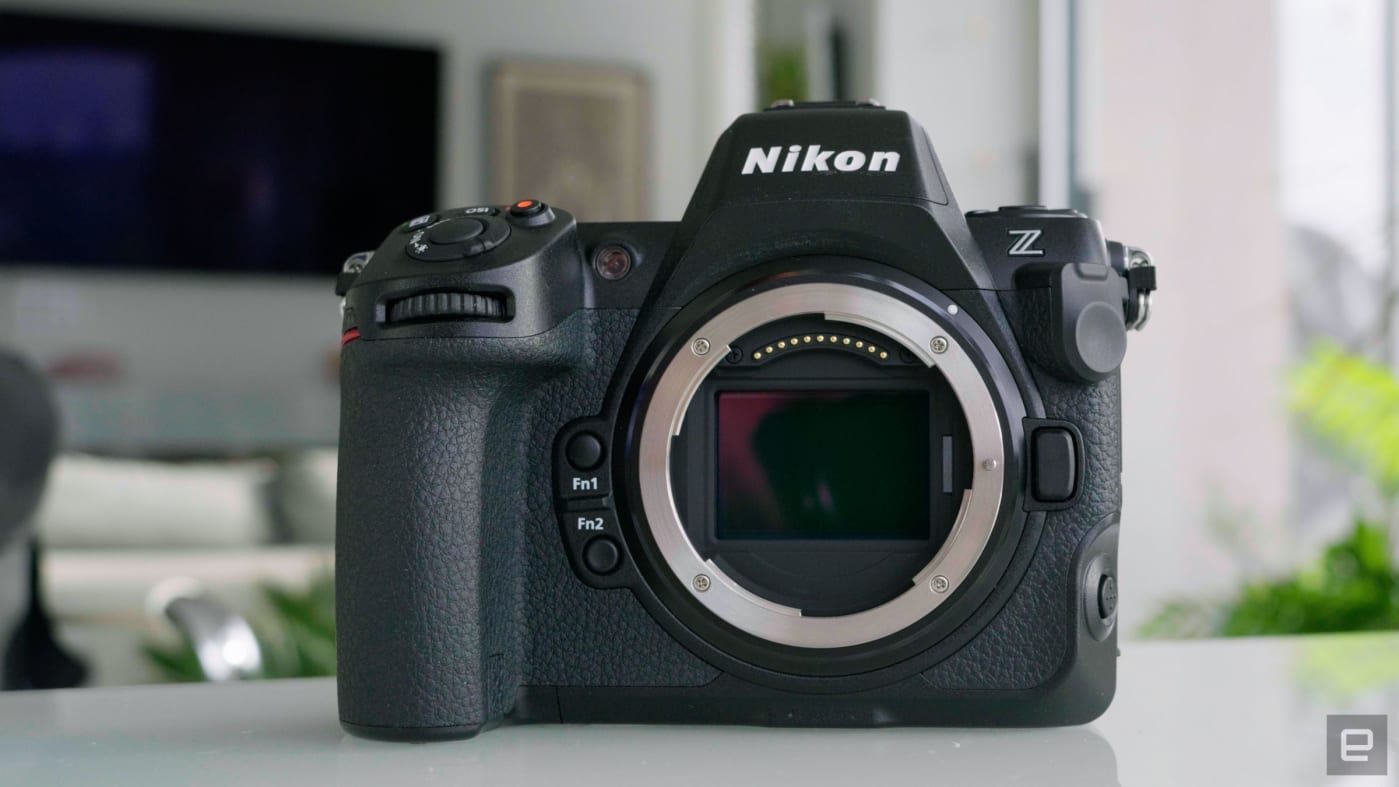Nikon halts development of DSLR cameras
Nikon will stop developing new single-lens reflex (SLR) cameras and focus exclusively on mirrorless models, according to a report by Nikkei. The news marks the end of an era and essentially confirms what most observers were already expecting, as the Japanese company hasn't released a new DSLR camera since the D6 was released in June 2020. Although If it wouldn't design more new models, Nikon would continue to produce and distribute existing DSLRs like the D6 and D3500 (above).
Nikon released its first single-lens reflex camera, the Nikon F, in 1959. It was one of the most advanced cameras of its time, thanks to features like a large bayonet mount and a depth of field preview button. , titanium focal plane shutter, modular design and more. The company's first true professional DSLR was the 2.7-megapixel D1, launched in 1999.
SLR cameras use a mirror and a prism to give the user a direct optical view through the camera lens, with the mirror moving apart as the photo is taken. Mirrorless cameras, on the other hand, direct light directly from the lens to the sensor and provide the user with a view through an electronic viewfinder or rear screen. Mirrorless cameras, as we discussed in our explainer and video below, allow for more compact housings, advanced AI subject recognition, enhanced video functionality and more.
I
This content is not available due to your privacy preferences. Update your settings here, then reload the page to see it.
Besides the not so popular Nikon 1 series, it came late to the mirrorless camera market compared to Sony and others with the launch of its Z mount system and the Z6 and Z7 models in 2018, with the APS-C Model Z50 following the following year. Until recently, its high-end professional line consisted only of DSLR models like the D6. However, that changed when Nikon launched the $5,500 Z9 without a mechanical shutter late last year with a combination of speed, power and video chops, to largely positive reviews.
Nikon stopped making point-and-shoot cameras some time ago, as that business was mostly eaten up by smartphones. It also recently discontinued a large number of full-frame and APS-C DSLR lenses and camera bodies over the past year.
Global camera sales have dropped dramatically in just five years, with interchangeable lens cameras (mirrorless and DSLR) dropping from 11.67 million units sold in 2017 to 5.34 million 'by 2021. This has forced companies like Nikon to focus their efforts on the most profitable models. Nikon's imaging division now makes half of its money from mirrorless models, with SLRs accounting for 30%.
All products recommended by Engadg...
Nikon will stop developing new single-lens reflex (SLR) cameras and focus exclusively on mirrorless models, according to a report by Nikkei. The news marks the end of an era and essentially confirms what most observers were already expecting, as the Japanese company hasn't released a new DSLR camera since the D6 was released in June 2020. Although If it wouldn't design more new models, Nikon would continue to produce and distribute existing DSLRs like the D6 and D3500 (above).
Nikon released its first single-lens reflex camera, the Nikon F, in 1959. It was one of the most advanced cameras of its time, thanks to features like a large bayonet mount and a depth of field preview button. , titanium focal plane shutter, modular design and more. The company's first true professional DSLR was the 2.7-megapixel D1, launched in 1999.
SLR cameras use a mirror and a prism to give the user a direct optical view through the camera lens, with the mirror moving apart as the photo is taken. Mirrorless cameras, on the other hand, direct light directly from the lens to the sensor and provide the user with a view through an electronic viewfinder or rear screen. Mirrorless cameras, as we discussed in our explainer and video below, allow for more compact housings, advanced AI subject recognition, enhanced video functionality and more.
I
This content is not available due to your privacy preferences. Update your settings here, then reload the page to see it.
Besides the not so popular Nikon 1 series, it came late to the mirrorless camera market compared to Sony and others with the launch of its Z mount system and the Z6 and Z7 models in 2018, with the APS-C Model Z50 following the following year. Until recently, its high-end professional line consisted only of DSLR models like the D6. However, that changed when Nikon launched the $5,500 Z9 without a mechanical shutter late last year with a combination of speed, power and video chops, to largely positive reviews.
Nikon stopped making point-and-shoot cameras some time ago, as that business was mostly eaten up by smartphones. It also recently discontinued a large number of full-frame and APS-C DSLR lenses and camera bodies over the past year.
Global camera sales have dropped dramatically in just five years, with interchangeable lens cameras (mirrorless and DSLR) dropping from 11.67 million units sold in 2017 to 5.34 million 'by 2021. This has forced companies like Nikon to focus their efforts on the most profitable models. Nikon's imaging division now makes half of its money from mirrorless models, with SLRs accounting for 30%.
All products recommended by Engadg...
What's Your Reaction?






















